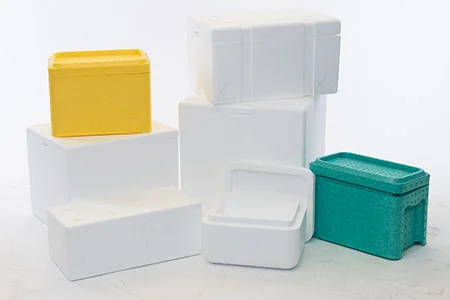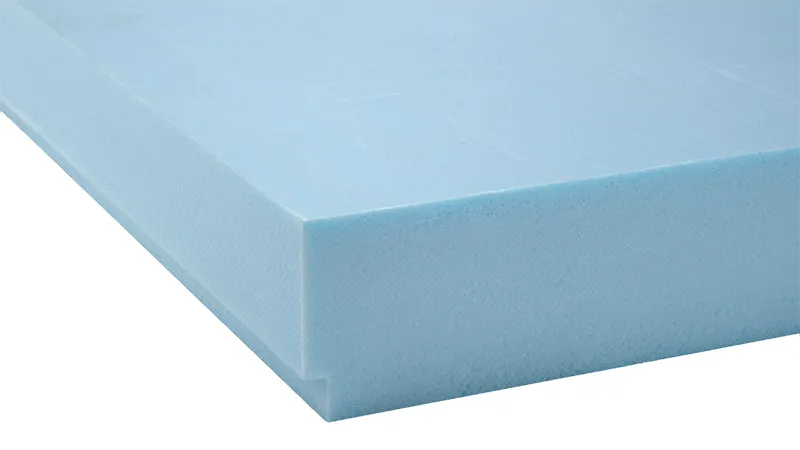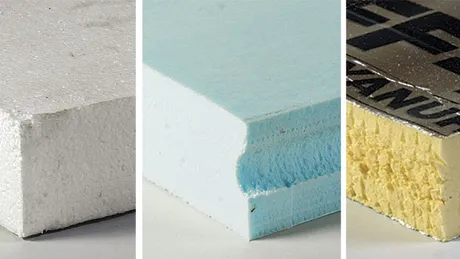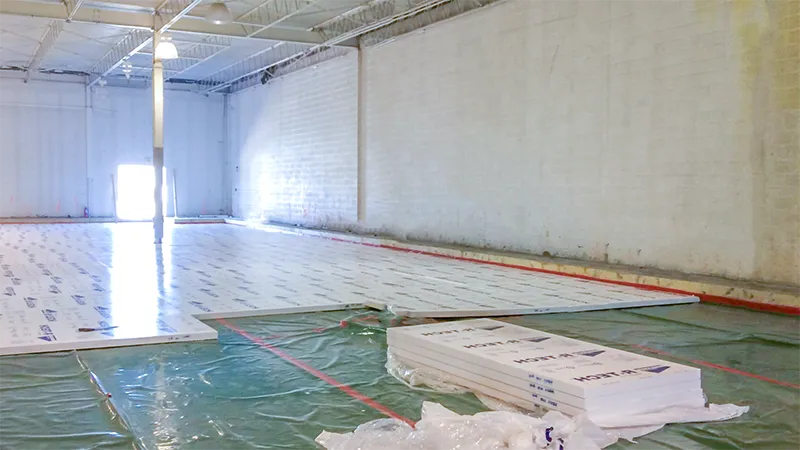In the realm of insulation materials, EPS foam vs styrofoam are frequently conflated. However, discerning the disparities between these two is vital for informed decisions in construction and recycling.
This guide will explore their differences, highlighting their distinct properties, applications, and environmental impact.
What is EPS Foam?

EPS stands for Expanded Polystyrene, a lightweight and versatile material renowned for its exceptional insulation properties. It’s created through the expansion of polystyrene beads, resulting in a rigid foam board that boasts excellent thermal resistance. EPS foam is commonly used in various industries, including construction, packaging, and crafting.
Key Characteristics of EPS Foam:
- Lightweight: EPS foam is incredibly light, making it easy to handle and install.
- Thermal Insulation: Its closed-cell structure provides outstanding thermal insulation, helping to regulate indoor temperatures and reduce energy costs.
- Moisture Resistance: EPS foam is resistant to moisture, preventing mold and mildew growth.
- Durability: Despite its lightweight nature, EPS foam is remarkably durable, capable of withstanding impact and compression.
- Compressibility: EPS foam can be compressed to a certain extent, depending on its density and thickness.
- Versatility: It is highly versatile and can be used in various applications, including construction, packaging, and crafting.
- Recyclability: EPS foam is recyclable and can be melted down and reused to produce new products, although the recycling process can be challenging.
What is Styrofoam?

Styrofoam is a trademarked brand of extruded polystyrene foam insulation, commonly used for a wide range of applications, from packaging to construction.
Developed by Dow Chemical Company in the 1940s, Styrofoam has become synonymous with polystyrene foam in many contexts, although technically, Styrofoam refers specifically to a type of extruded polystyrene foam.
Key Characteristics of Styrofoam:
- Extruded Polystyrene: Styrofoam is made through an extrusion process, resulting in a closed-cell foam with a smooth surface and excellent thermal insulation properties.
- High Strength-to-Weight Ratio: Despite its lightweight nature, Styrofoam exhibits high strength, making it suitable for load-bearing applications.
- Moisture Resistance: Similar to EPS foam, Styrofoam is resistant to moisture, making it an ideal choice for insulation in damp environments.
- Versatility: Styrofoam is highly versatile and can be easily shaped and molded to fit various requirements, from insulation panels to packaging inserts.
- Thermal Insulation: It provides superior thermal insulation, contributing to energy savings and enhanced comfort indoors.
- Non-Biodegradable: Styrofoam is not biodegradable and can persist in the environment for long periods if not properly disposed of.
- Environmental Impact: Due to its non-biodegradable nature, Styrofoam has received scrutiny for its environmental impact, particularly in terms of waste management and pollution.

EPS Foam vs Styrofoam: Understanding the Differences
While EPS foam and Styrofoam share many similarities, they also have distinct differences that set them apart in terms of performance, manufacturing process, and environmental impact.
Manufacturing Process:
- EPS Foam: EPS foam is manufactured through the expansion of polystyrene beads using steam, resulting in a closed-cell foam with a beaded texture.
- Styrofoam: Styrofoam, on the other hand, is produced through an extrusion process where polystyrene pellets are melted and then extruded into a continuous sheet, which is subsequently cooled and cut into desired shapes.
Thermal Insulation:
- EPS Foam: EPS foam is known for its excellent thermal insulation properties, thanks to its closed-cell structure, which traps air and minimizes heat transfer.
- Styrofoam: Styrofoam also offers superior thermal insulation, making it suitable for applications where high thermal resistance is required.
Density and Strength:
- EPS Foam: EPS foam typically has a lower density compared to Styrofoam, making it lightweight and easy to handle. However, it may have slightly lower compressive strength.
- Styrofoam: Styrofoam has a higher density and greater compressive strength compared to EPS foam, making it suitable for applications where structural integrity is crucial.
Environmental Impact:
- EPS Foam: EPS foam is recyclable and can be melted down and reused to produce new products. However, its recycling process can be challenging and may not be widely available in all areas.
- Styrofoam: Styrofoam is not easily recyclable and can persist in the environment for hundreds of years if not properly disposed of. Its lightweight nature also makes it prone to littering and pollution.
Benefits of EPS vs Styrofoam Insulation
Both EPS foam and Styrofoam offer numerous advantages as insulation materials, making them favored choices in the construction industry and beyond.
Energy Efficiency:
EPS Foam:
- Enhances building energy efficiency by significantly reducing heat loss and lowering heating and cooling expenses.
- Its closed-cell structure ensures superior thermal insulation, maintaining consistent indoor temperatures.
Styrofoam:
- Provides exceptional thermal insulation, leading to substantial energy savings and improved indoor comfort.
- Its high strength-to-weight ratio makes it ideal for insulation in various climates and building types.
Versatility:
EPS Foam:
- Highly versatile, suitable for a wide range of applications such as wall, roof, and foundation insulation.
- Its lightweight and ease of installation make it a preferred choice for construction projects.
Styrofoam:
- Offers versatility in applications, from insulation in cold storage facilities to protective packaging for delicate items.
- Its adaptability and durability make it a reliable solution for diverse insulation needs.
Cost-Effectiveness:
EPS Foam:
- Affordable insulation option, delivering excellent thermal performance and durability at a reasonable cost.
- Long-term savings on energy bills and maintenance expenses make it a cost-effective investment.
Styrofoam:
- Cost-effective solution that helps reduce construction costs without compromising on insulation quality.
- Its longevity and reliability translate to significant savings over the lifespan of a building.
In summary, EPS foam stands out for its exceptional energy efficiency, versatility across applications, and cost-effectiveness, making it a top choice for insulation solutions in modern construction projects.
EPS Styrofoam Recycling Compactor: Addressing Environmental Concerns
In recent years, the environmental impact of EPS foam and Styrofoam has come under scrutiny due to their non-biodegradable nature and potential for pollution. However, efforts are underway to address these concerns through innovative recycling solutions, such as EPS Styrofoam recycling compactors.
These compactors are designed to compress and densify EPS foam and Styrofoam waste, reducing its volume and making it easier to transport and recycle. By compacting EPS foam and Styrofoam waste onsite, these machines help minimize landfill space and promote sustainable waste management practices.
Conclusion

In conclusion, while EPS foam and Styrofoam are often used interchangeably, they have distinct differences in terms of manufacturing process, properties, and environmental impact. Understanding these differences is essential for choosing the right insulation material for your specific needs.
Both EPS foam and Styrofoam offer excellent thermal insulation properties, versatility, and cost-effectiveness, making them popular choices in various industries. However, it’s essential to consider the environmental implications of each material and explore recycling options to minimize waste and promote sustainability.
By weighing the benefits and drawbacks of EPS foam and Styrofoam and making informed decisions, we can create more energy-efficient and environmentally friendly buildings and products for a sustainable future.
FAQs
What are the primary distinctions in insulation performance when comparing Styrofoam vs EPS?
The primary distinctions in insulation performance between Styrofoam and EPS lie in their manufacturing processes and material properties. Styrofoam, being extruded polystyrene foam, tends to have a smoother surface and higher strength-to-weight ratio compared to EPS, which is expanded polystyrene foam.
However, EPS typically offers better thermal insulation properties due to its closed-cell structure, making it more efficient at regulating indoor temperatures and reducing energy costs.
How does EPS Styrofoam insulation compare to traditional insulation methods in terms of efficiency and cost-effectiveness?
EPS Styrofoam insulation often outperforms traditional insulation methods in terms of both efficiency and cost-effectiveness. Its exceptional thermal insulation properties help minimize heat transfer, leading to significant energy savings and improved indoor comfort.
Additionally, EPS Styrofoam is lightweight, easy to install, and relatively affordable compared to other insulation materials, making it a cost-effective solution for various construction projects.
How effective is the EPS Styrofoam recycling compactor in reducing waste volume and promoting sustainable waste management practices?
The EPS Styrofoam recycling compactor plays a crucial role in reducing waste volume and promoting sustainable waste management practices. By compressing and densifying EPS Styrofoam waste, the compactor significantly reduces its volume, making it easier and more cost-effective to transport and recycle.
This innovative recycling solution helps minimize landfill space and encourages the reuse of EPS Styrofoam materials, contributing to a more environmentally friendly waste management process.
What are the key differences between EPS, XPS, and Styrofoam insulation?
The key differences between EPS, XPS, and Styrofoam insulation lie in their manufacturing processes, material properties, and applications.
EPS (Expanded Polystyrene) foam is created by expanding polystyrene beads, resulting in a lightweight foam with excellent thermal insulation properties.
XPS (Extruded Polystyrene) foam is produced through an extrusion process, resulting in a closed-cell foam with a smooth surface and a high strength-to-weight ratio.
Styrofoam, a trademarked brand of extruded polystyrene foam, shares similarities with XPS but is often used as a generic term for polystyrene foam insulation.
Each type of insulation has its own advantages and disadvantages, making it essential to consider factors such as thermal performance, cost, and environmental impact when choosing the most suitable insulation material for a specific application.
Is EPS the same as styrofoam?
No, EPS foam and Styrofoam are different, although they are often confused or used interchangeably in common language. EPS (Expanded Polystyrene) foam refers to a type of rigid foam insulation made from expanded polystyrene beads. Styrofoam, on the other hand, is a trademarked brand of extruded polystyrene foam insulation developed by Dow Chemical Company.
While both EPS foam and Styrofoam are types of polystyrene foam insulation, they have differences in their manufacturing processes, properties, and applications.
Is EPS Styrofoam suitable for insulating cold storage facilities?
Yes, EPS and Styrofoam are suitable for insulating cold storage facilities due to their excellent thermal insulation properties and resistance to moisture.
What is EPS styrofoam?
Depending on its density and thickness, EPS foam is compressible to a certain extent. Lower-density EPS foam is more compressible compared to higher-density foam. However, even high-density EPS foam can be compressed under sufficient pressure.
How Strong is EPS foam?
EPS can be manufactured in various densities, achieving a remarkable compressive strength of up to 8,640 pounds per square foot and an impressive flexural strength of 10,800 pounds per square foot. Despite being composed of 95% air and extremely lightweight, EPS demonstrates exceptional strength.
Is EPS foam compressible?
Depending on its density and thickness, EPS foam is compressible to a certain extent. Lower-density EPS foam is more compressible compared to higher-density foam. However, even high-density EPS foam can be compressed under sufficient pressure.
